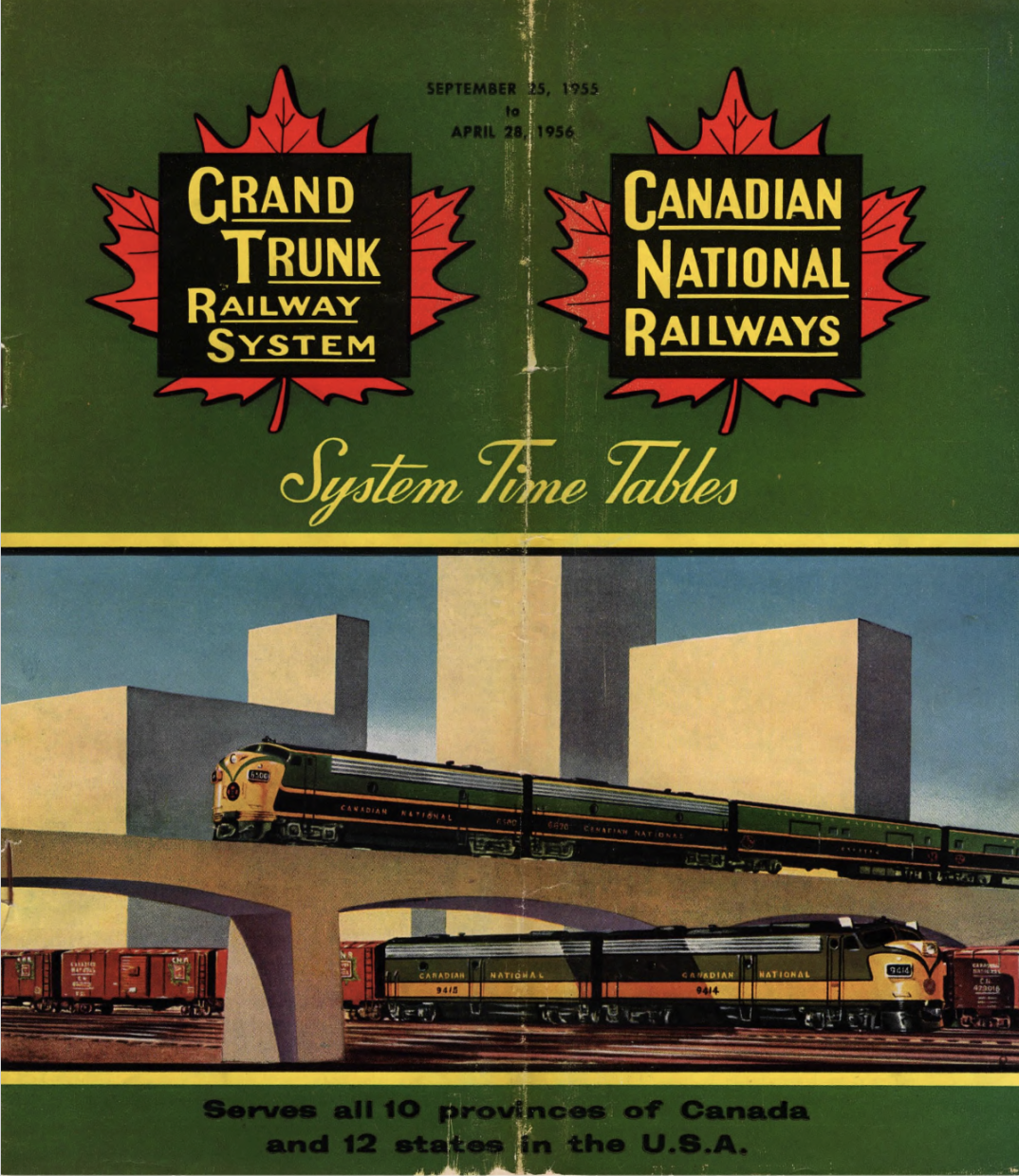Train-Time Travel

A Voyage Back to 1955, When Passenger Rail Still Ruled the Land
// After spending some time in Europe—where I almost always get around by rail, usually of the high-speed variety—I'm inevitably beset by a sense of melancholy when I return to North America. On this continent, passenger rail remains, for the most part, a disappointment. The inter-city networks are sparse. On-time departures and arrivals are the exception, rather than a strictly-observed rule. In too many places, the rolling stock is outdated (though Amtrak has lately been restoring services and modernizing its fleet, and, as I write in this post, about a recent Quebec City-Montreal trip, so is VIA Rail in eastern Canada). Trans-border services are inconvenient, with lengthy customs inspections. And travel speeds are achingly slow. Though the Acela in the United States's Northeast Corridor is sometimes called "high-speed," its average speed from Boston to DC is just 70 miles (113 kilometers) an hour; in most European nations, the Acela wouldn't even qualify as an express.
The temptation is to look to geography as the explanation for the gap between the quality, and quantity, of rail service on the two sides of the Atlantic. But even a passing knowledge of railway history makes it clear that blaming geography for the current dismal status quo is beyond simplistic. Over a century ago, American and Canadian trains had conquered geography, providing frequent, comfortable, and rapid service on many major corridors. The United States built the world's largest passenger rail network, with a quarter million miles of track, and at various times, Canada boasted the fastest passenger trains—steam or diesel—in the world.
Lately, when I'm looking for inspiration about what rail travel on this continent could be, I don't look to what's going on in France, or Spain, or Germany, or Italy. I look to what it used to be—and not in the distant past, but within the memory of many people alive today. More specifically, I look to the astonishing variety and high levels of service available during the 20th-century heyday of passenger rail in North America, circa 1955.
The secret to time travel, it turns out, involves getting your hands on a published railway schedule. I found one in a university library: a book with the odd title From Abbey to Zorra via Bagdad: Canadian Pacific Railway Passenger Services in the 1950s. (Abbey is a village in Saskatchewan; Zorra a municipality in Ontario; and Canada's Bagdad is located in rural New Brunswick.)
